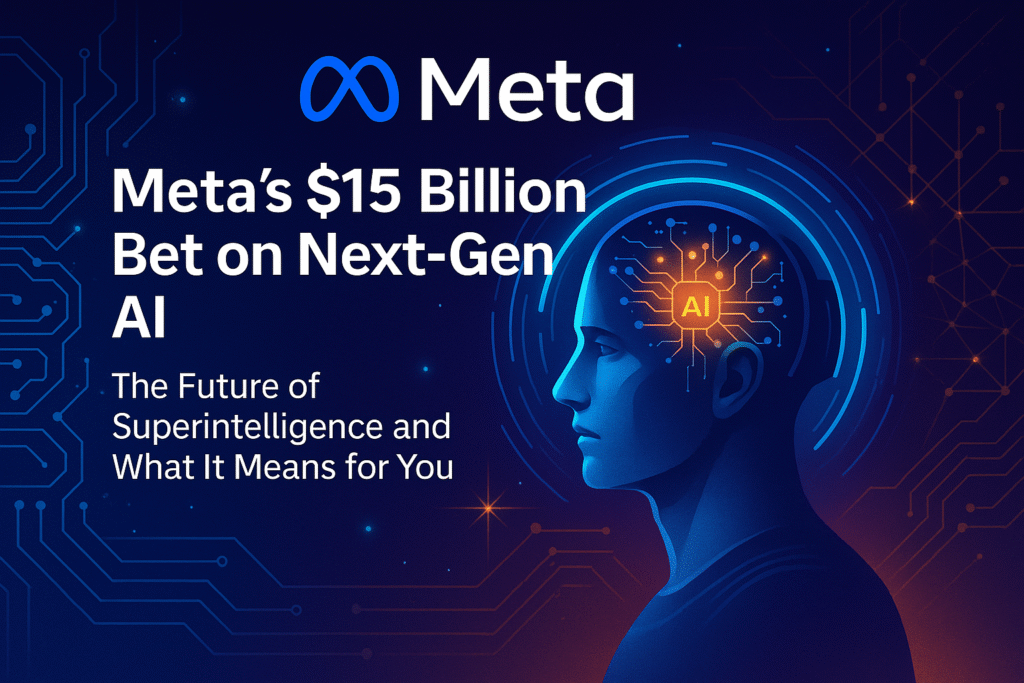
Introduction: More than a Tech Hype, It’s a Structural Revolution
Nvidia continues to assert that we are still in the early innings of an AI explosion. According to CEO Jensen Huang, global spending on AI infrastructure is projected to reach a whopping $3–4 trillion annually by 2030 Reuters. Even after conservative growth forecasts, Nvidia posted strong earnings—data center revenue surged over 110% year-on-year IT Pro. With emerging AI hardware like Jetson AGX Thor powering edge robotics TechRadarWindows Central and the firm’s market cap crossing $4 trillion USD—the first company ever to do so Reuters—this is more than a moment; it’s a movement.
This article explores why Nvidia believes the AI revolution is still accelerating, what fuels this unrelenting growth, and how it translates into global opportunity—not just for Nvidia, but for the entire tech landscape.
1. The Numbers Speak Volumes
AI Infrastructure Spending: Trillions to Come
Jensen Huang calls today’s AI boom a “new industrial revolution.” Despite some investor doubts, he insists growth is far from peaking, estimating $3–4 trillion in annual AI infrastructure spending by 2030 ReutersIT Pro. Supporting this, a New Street analyst suggests Nvidia could command 55–60% of that market—translating to $1–1.2 trillion in potential revenue Barron’s.
Revenue Trends That Validate the Optimism
Nvidia’s Q3 data center sales jumped 112% YoY, contributing $30.8 billion in a single quarter Reddit+1. Beyond that, financials reflect unmatched operational strength:
- Gross margin: ~75%
- Operating income margin: ~62%
- Free cash flow: ~$60 billion
- Projected revenues (2030): ~$324 billion Monexa AI+2Monexa AI+2ReelmindAInvest
Infrastructure Build-Outs: Project Stargate & US Manufacturing
OpenAI’s mega $500 billion plan—Project Stargate—entails gigawatt-scale AI data centers, each costing ~$50B and consuming ~1 GW of power Barron’s. Nvidia also confirmed plans to manufacture AI chips in the U.S., building facilities in Arizona and Texas to expand capacity and resilience AP News.
2. Strategic Advantages: Why Nvidia Leads the AI Charge
Unmatched Market Position
Nvidia holds an estimated 80–98% market share in AI GPUs, maintaining an overwhelming lead in server-grade and edge AI compute siliconanalysts.comMonexa AIGuruFocus.
Robust Ecosystem & Competitive Moat
Nvidia’s long-developed CUDA ecosystem gives it a huge competitive advantage: everything from libraries to community is built around Nvidia technology Reelmind+1.
Partnerships That Reinforce Strength
Strategic alliances with cloud giants—AWS, Azure, Google Cloud, Oracle—and industry players like CoreWeave for AI infrastructure deployment amplify Nvidia’s reach ReelmindWikipedia.
3. Innovation Pipeline Powering the Future
Blackwell Architecture & Rubin to Follow
The AI-ready Blackwell GPU architecture, specifically designed for generative AI workloads, is already here. Next up:
- Rubin (2026): Named for Vera Rubin, 50 petaflops of performance
- Feynman (2028): Next-gen successor to Rubin Wikipedia+1
DGX & Supercomputing Platforms
Nvidia’s DGX GB200 NVL72 liquid-cooled rack system delivers enormous compute density and memory—ideal for training gargantuan AI models Wikipedia.
Edge AI: Jetson AGX Thor
For robotics and automation, Nvidia unleashed Jetson AGX Thor—a supercomputer-like device for edge AI with 7.5× compute power and 128GB RAM TechRadarWindows Central.
4. Opportunities & Risks on the Horizon
Blue Skies Ahead
- Government & enterprise AI infrastructure investments
- Affordable and localized robotics with Jetson platforms
- AI-as-a-Service shaping new cloud paradigms
Challenges to Watch
- Geopolitical tensions: Export restrictions hurt Chinese revenue; estimated $10B risk Monexa AIAInvest
- Competition: AMD, Intel, AWS chips encroach on market share—expected to capture 20–25% of cloud demand by 2027 Monexa AI
- Supply Chain Constraints: Delays in Blackwell chip shipments could impact Q1 2026 growth Monexa AI
5. Broader Impacts: Markets, Robotics & Beyond
Market Valuation
Nvidia became the first company ever to exceed $4 trillion market cap (~July 2025), testament to investor confidence in its AI dominance ReutersMoneyWeek.
Robotics and Physical AI
With edge devices like Thor and companion ecosystems like Omniverse and Isaac Sim, Nvidia is positioning itself at the frontier of autonomous machines Monexa AI+1.
Democratized AI Infrastructure
AI infrastructure is no longer just for hyperscalers. With stock-to-robotic developers gaining access via advanced edge platforms, innovation is becoming more broadly accessible.
6. Case Study: OpenAI’s One-Gigawatt AI Super-Factories
At the heart of the AI infrastructure race is Project Stargate, OpenAI’s $500B plan for data-center build-outs, including a gigawatt site in India—requiring $50B each and entirely powered by Nvidia hardware supply ($35B worth) Barron’s. These projects underscore the explosive demand power that Nvidia is set to serve.
7. Future Forecast: What’s Next?
- 2030 AI Infrastructure Spend: $3–4T annually
- Nvidia Revenue Potential: $1–1.2T from infrastructure share (55–60%)
- New Products: Rubin, DGX enhance compute capability
- New Verticals: Robotics, smart cities, AI energy optimization

